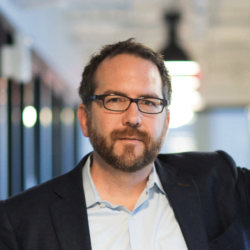A question on the minds of many executives at scientific and scholarly societies is whether it will be possible to hold a large in-person meeting (or any gathering over a hundred people) before a vaccine or drug is widely available or the pandemic otherwise subsides. Conference organizers with meetings in the spring of 2020 (including the Society for Scholarly Publishing, the publisher of The Scholarly Kitchen) have been forced to either cancel events or scramble to move meetings to an online format in the wake of the rapidly moving public health situation. Those with events further out on the calendar, have the luxury of more time to prepare for alternative scenarios.
While governments around the world are developing plans to ease restrictions and reboot as much economic activity as possible without triggering a resurgence of COVID-19 infections, the return of large events like arena sports, concerts, and conferences (especially international conferences) is surely last on the list of economic activities to be restarted. The governor of California, for example, outlined a 4 stage plan for reopening the the world’s 5th largest economy yesterday; sporting events, concerts, and conferences are dead last (Stage 4), “once therapeutics have been delivered.” It is one thing to reopen a bookstore, barbershop, boutique, school, or restaurant. It is another thing entirely to bring thousands (or tens of thousands) of people — people who live in different cities and regions of the world — together in the same venue. The Wall Street Journal (WSJ) explored this issue as it pertains to spectator sports, but the issues are largely the same for academic conferences:
The prevalence of cases is unlikely to sink low enough by this fall to host a football game without the high risk of someone infected being in the crowd. The more people in the crowd, the greater the chance that at least one is infected, and the more people the infected will be in contact with. All it takes is one game to trigger a local outbreak.
The WSJ noted that even if the pandemic subsides by the end of summer, the possibility of a “second wave” is hanging over fall events. Robert Redfield, director of the Centers for Disease Control and Prevention (CDC), has echoed this concern, warning: “We’re going to have the flu epidemic and the coronavirus epidemic at the same time.”
Even if such events are given the green light by authorities before the arrival of a vaccine, how many people will attend? How many people will be willing to get on a train or airplane and travel to another city, stay at a hotel, and then pack into lecture rooms, stroll exhibit halls, and attend receptions? And will they commit increasingly scarce funds to do so, with the potential of last-minute cancellation hanging over every event should the city or region in which the conference is held see a resurgence in COVID-19 cases? Will exhibitors and sponsors commit marketing dollars to conferences that may be canceled and certainly will have diminished attendance? Will the economics of many meetings even work with significantly diminished attendance?
The efforts being made to develop and manufacture a coronavirus vaccine are nothing short of Herculean (for an excellent overview of the state of vaccine development and the challenges that lay ahead, I highly recommend this article by Derek Lowe over at In the Pipeline, a blog associated with Science Translational Medicine). But even with these unprecedented efforts, the best-case scenarios locate the arrival of a vaccine sometime in 2021 and wide-scale dissemination months beyond that. It is possible that a drug or other treatment to manage the effects of COVID-19 (adapted from therapeutics already in use) could be deployed sooner, but so far there is no known effective treatment. While researchers, pharmaceutical companies, governments, and not-for-profits like the Bill and Melinda Gates Foundation work through the challenges of identifying, developing, manufacturing, and distributing a vaccine or drug as fast as possible, society and association leadership must begin contemplating scenarios where physical conferences and other large meetings are not able to be held until late 2021 or beyond.
For organizations with spring events, this could mean 2 or 3 years without an in-person annual meeting. This not only affects meetings revenue but can have ripple effects, impacting membership renewals, journal article recruitment, and other society activities. Societies will need to move quickly to develop alternative approaches, not only to in-person conferences, but to member engagement, author marketing, and other initiatives. This may require alternative technologies, staff skills sets, processes, and business models. At the same time, it places more pressure on other revenue streams: journals and other publications, education, membership, and so on. It may be prudent to review these programs in the light of the present environment.
This not only affects meetings revenue but can have ripple effects, impacting membership renewals, journal article recruitment, and other society activities.
In addition to the revenue implications for professional societies themselves, there are the implications for the communities that societies serve. Scientific and academic conferences serve many functions: career advancement, communicating research, professional networking, recruiting, and providing a venue to meet with colleagues from other institutions to plan joint projects (among many other functions). Conferences are so deeply embedded in the culture and cadence of science and academia that it is hard to imagine what professional life would look like without them. Many organizations are looking to replace conferences with virtual events, but simply streaming the same sessions on the same schedule may prove insufficient. It is one thing to attend a 3- or 4-day event in person, where one is removed from the distractions and demands of work and home life. It is another thing to do so via video stream, while working from home. Virtual conferences will require new approaches, involving new staff skill sets, new technologies, and new business models.
True to brand, the National Association of Broadcasters (NAB) is out in front on reconceptualizing their annual meeting, which had anticipated attendance of 100,000 this month in Las Vegas. Instead of canceling the meeting or attempting to hold it online, NAB has reconceptualized it as an ongoing streaming service that may continue even after the return of its physical meeting:
NAB Show Express will consist of a mixture of live-streamed appointment viewing, preproduced videos slotted into a TV-like schedule and on-demand content. There will be a programming grid like the one used by popular streaming service Pluto, and viewers will get to see on-air graphics and interactive elements…. NAB is combining its pop-up streaming service with more traditional trade-show elements, like access to white papers and news from vendors that were scheduled to exhibit in Vegas next week. By adding 24/7 streaming, the company hopes to reach a remote workforce that’s working irregular hours and has traded office life for a mix of Zoom calls and Netflix streams.
The last sentence offers a key insight: the needs of work-from-home attendees are very different from in-person attendees. Reconceptualizing events with these needs in mind is essential. Attendees are likely to be in different time zones, have different home-life demands, and have the availability to participate at different hours and for different durations. While the NAB model may not be suited to all associations, aspects of it may be when combined with other approaches appropriate for each community.
In addition to the core components of academic conferences — keynotes, lectures, posters — there are other aspects to be considered. Question and answer sessions may benefit from an asynchronous format to allow participation from people unable to attend in real time. Mentorship programs that centered around an in-person meeting may need to be reconceptualized. Wide-ranging conversations that take place over a breakfast roundtable may be possible without eggs and toast (but surely not without a cup of home-brewed coffee). Reimagining how vendors and sponsors might engage with attendees in an online format may both preserve a valued conference function and a revenue stream for the conference.
Professional networking is perhaps the most challenging aspect of in-person conferences to reinvent online, and yet one of the most important. The new connections that attendees make, and old connections that they renew, often provide much of the value of a meeting (and can figure prominently in decisions about what meetings to participate in). Much networking happens at events like receptions, coffee breaks, and dinners. While new modes of interaction and networking will never replace the kind of meaningful connections that take place in-person, they may nonetheless provide attendees with a richer virtual meeting experience.
As circumstances change, societies may find themselves reconceptualizing some physical events. While bringing 10,000 people from around the world to a single venue may not be feasible in the near term, it may be possible to hold a series of smaller local events, perhaps combined with streaming and interactive online resources. It is important to recognize that physical meetings and virtual meeting are not mutually exclusive. The physical meeting can incorporate some of the affordances of the virtual world even as virtual meetings, when appropriate and safe, extend to physical meetings, with their own set of outstanding affordances. If “shelter in place” has taught us anything, it is that we humans like to get together.
Go to Original Article



